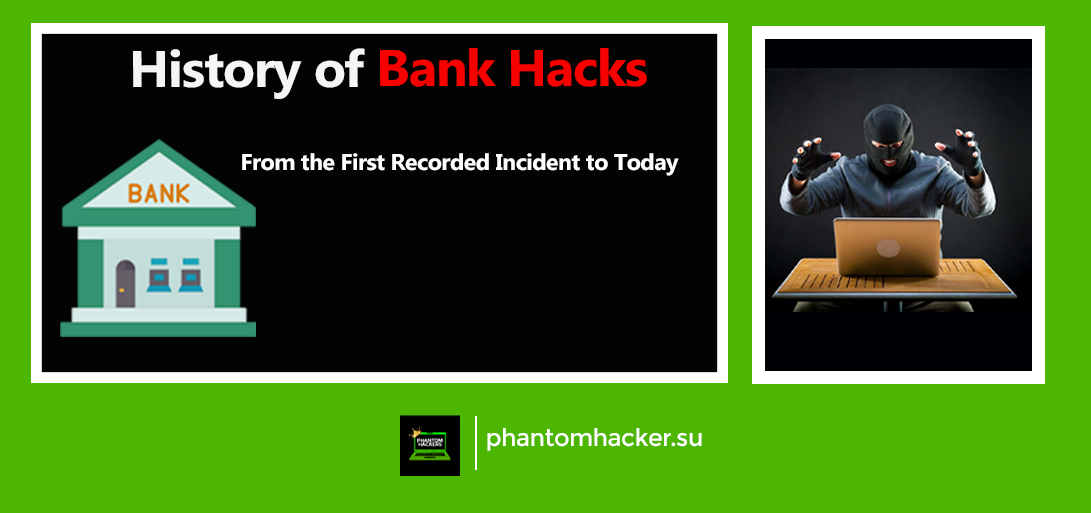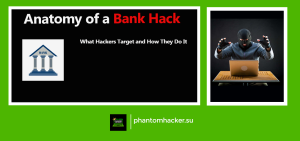Banking is an essential part of modern-day society, and banks store a vast amount of sensitive information. With the advent of technology, banks are becoming more vulnerable to hacking attempts, and this poses a significant risk to their customers. Over the years, several high-profile bank hacks have taken place, and it’s interesting to trace the history of bank hacks from the first recorded incident to today.
Introduction
Banks have been around for centuries, and over time, they have evolved to become more secure. However, with the advent of the internet and the digital age, banks are facing a new kind of threat – cybercrime. The first recorded bank hack dates back to the 1970s, and since then, there have been several high-profile bank hacks that have taken place. This article aims to explore the history of bank hacks and how banks are responding to this growing threat.
The First Recorded Bank Hack
The first recorded bank hack took place in the 1970s when a group of hackers attempted to steal money from a bank using a computer. The hackers managed to transfer funds to their account but were caught by the FBI. This incident highlighted the potential dangers of cybercrime and set the tone for what was to come.
The Rise of Cybercrime in the 21st Century
With the rise of the internet and digital technology, cybercrime became more prevalent. In the early 2000s, hackers started targeting banks more frequently, and several high-profile hacks took place. In 2005, ChoicePoint, a data aggregator, was hacked, and the hackers gained access to over 163,000 customer records. This incident led to the passing of several data protection laws, including the US federal data breach notification law.
The Early 2010s: A Spate of High-Profile Bank Hacks
In the early 2010s, several high-profile bank hacks took place. In 2011, RSA Security was hacked, and the hackers gained access to sensitive information about the company’s two-factor authentication tokens. This incident raised concerns about the security of two-factor authentication, which is widely used by banks to protect their customers’ accounts.
In 2012, the South Carolina Department of Revenue was hacked, and the hackers gained access to over 3.8 million tax returns. This incident highlighted the vulnerability of government agencies to cyberattacks and led to increased investment in cybersecurity.
The 2017 Equifax Hack
In 2017, Equifax, one of the largest credit reporting agencies in the US, was hacked, and the hackers gained access to sensitive information about over 143 million customers. This incident was one of the most significant data breaches in history and led to widespread concern about the security of customer data.
The 2018 Coincheck Hack
In 2018, Coincheck, a Japanese cryptocurrency exchange, was hacked, and the hackers stole over $500 million worth of cryptocurrency. This incident highlighted the vulnerability of cryptocurrency exchanges and the need for better security measures.
The 2020 Garmin Hack
In 2020, Garmin, a leading manufacturer of GPS and fitness tracking devices, was hacked, and the hackers demanded a $10 million ransom to release the company’s data. The hack caused significant disruption to Garmin’s services, including its website and customer support, and highlighted the vulnerability of IoT devices.
The 2021 Colonial Pipeline Hack
In 2021, the Colonial Pipeline, a major fuel pipeline in the US, was hacked, and the hackers demanded a ransom of $4.4 million. The hack caused significant disruption to fuel supplies on the East Coast and highlighted the vulnerability of critical infrastructure to cyberattacks.
The Most Common Types of Bank Hacks
There are several types of bank hacks, including phishing attacks, malware attacks, and DDoS attacks. Phishing attacks involve sending fraudulent emails to customers, encouraging them to disclose their login credentials. Malware attacks involve infecting computers with malicious software that can steal sensitive information. DDoS attacks involve overwhelming a bank’s servers with traffic, causing them to crash.
How Banks are Responding to Hacks
Banks are investing heavily in cybersecurity to prevent hacks from occurring. They are using advanced security measures, such as two-factor authentication, biometric authentication, and encryption, to protect their customers’ accounts. Banks are also educating their customers about the risks of cybercrime and how to protect themselves.
How to Protect Yourself from Bank Hacks
There are several steps you can take to protect yourself from bank hacks. Firstly, you should use strong and unique passwords for each of your accounts. Secondly, you should enable two-factor authentication on your accounts wherever possible. Thirdly, you should be vigilant for phishing emails and never click on links or download attachments from unknown sources. Finally, you should keep your computer and mobile devices up to date with the latest security patches and anti-virus software.
GET UNLIMITED MONEY TRANSFERS TO YOUR ACCOUNTS – HIRE MONEY TRANSFER HACKERS
MONEY TRAnsfers to bank accounts, paypal, cashapp & More
Conclusion
Bank hacks are becoming increasingly common, and they pose a significant risk to banks and their customers. Over the years, several high-profile bank hacks have taken place, and it’s interesting to trace the history of bank hacks from the first recorded incident to today. Banks are investing heavily in cybersecurity to prevent hacks from occurring, but customers also need to take steps to protect themselves.
FAQs
- What should I do if I suspect my bank account has been hacked?
- If you suspect your bank account has been hacked, you should contact your bank immediately and inform them of the suspicious activity. They will be able to investigate the matter and take appropriate action.
- How can I check if my personal information has been compromised in a data breach?
- You can check if your personal information has been compromised in a data breach by using a free online service such as Have I Been Pwned.
- Is it safe to use online banking?
- Online banking is generally safe if you take the necessary precautions, such as using strong passwords, enabling two-factor authentication, and being vigilant for phishing emails.
- What should I do if I receive a suspicious email from my bank?
- If you receive a suspicious email from your bank, you should not click on any links or download any attachments. Instead, you should contact your bank directly to verify the authenticity of the email.
- Can I be held responsible for fraudulent transactions on my bank account?
- If you report fraudulent transactions on your bank account promptly, you should not be held responsible for them. However, it’s important to check your bank statements regularly and report any suspicious activity as soon as possible.







